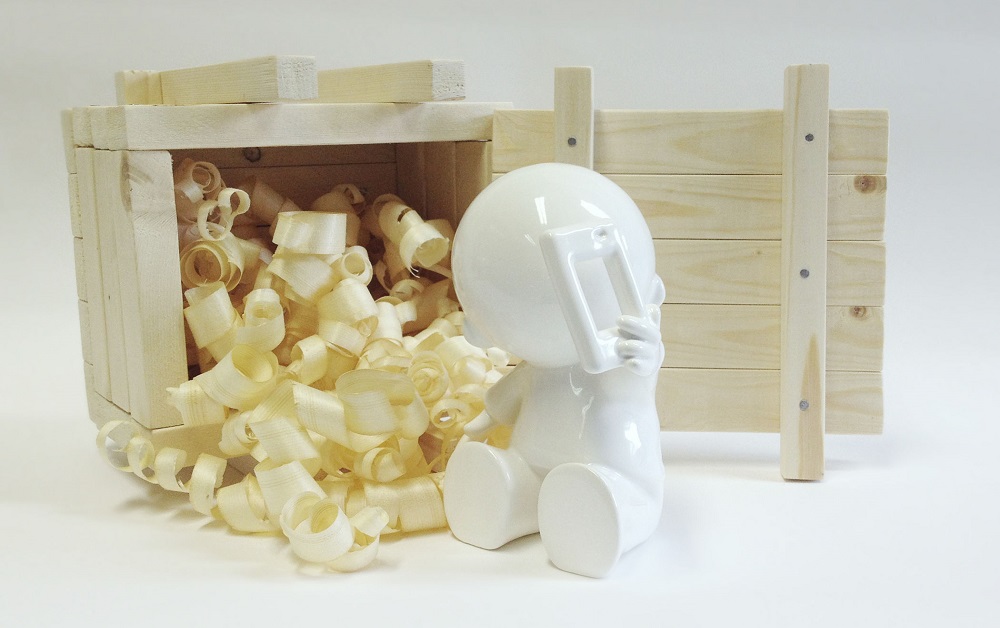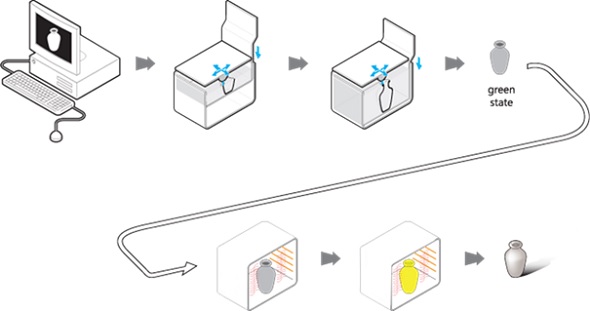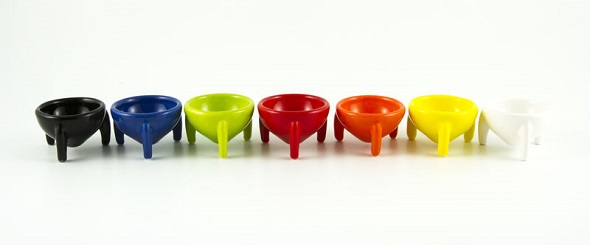
How 3D Printing in Ceramics Really Works
“Wait, you guys can print in ceramics?” – That’s a typical reaction when we show ceramic 3D prints at fairs and exhibitions. Printing objects in ceramics is an exciting technological process – and we want to shed some light on how it works.
The Material: It’s All Based on Ceramic Powder
When people hear the words ‘3D printing’, they often think of plastic filaments. But there are many other technologies for creating 3D prints. Some are based on liquids, while others are based on powder. For our ceramics printers, it all starts with a special, ultra-fine alumina silica ceramic powder.
The Ceramics Printing Process: A Number of Careful Steps
Industrial-grade printing technology is used to create ceramic prints. The printer builds a 3D model, from bottom to top, one layer at a time. First, the printer’s rolling mechanism spreads a thin layer of ceramic powder on a platform, and a print head places organic binder at specific locations. This is the first paper-thin layer of your model.
The platform then drops down and the roller spreads another layer of powder. Then, this process is repeated – one layer at a time – until your model is finished. By the time the printing is complete, the model sits in a thick bed of cushiony-fine alumina silica ceramic powder.

3D printing in ceramics: powder & binder, layer by layer.
At this point, the model is removed from the printer and placed in a drying oven. The drying oven strengthens the model dramatically, although it’s still fragile at this point. We call this the ‘green state’.
After drying, the model is extracted from the powder bed and excess powder is removed. It’s then fired in an oven to gain more strength. At this point, a pre-glaze coating is applied. The coating is dried and then fired for a second time. In the last step, the model is glazed and fired for the final time. Now, the shiny smooth glaze coating is visibly glossy.

3D printing in ceramics required several post-processing steps.
[vimeo 142474700 w=590 h=332]
The Look & Feel of Ceramics
Your ceramic prints will be get a colorful glazing. Available colors are: Gloss White, Gloss Black, Apple Green, Safety Orange, Banana Yellow, Denim Blue, and Tomato Red.

Our seven color options for ceramics.
To get a better understanding of the look & feel of 3D printed objects in ceramics, take a look at the video below. You’ll also see that ceramic prints are food-safe. You can safely eat and drink out of objects made from this material.
[youtube https://www.youtube.com/watch?v=fOfnrzZ1Ax4?rel=0]
To upload your 3D file and order a 3D print in ceramics, simply visit our 3D print lab. Want to discover other great materials? Click here for our blog posts about how to get your perfect multicolor and gold prints.
Have you already ordered something in ceramics and you want the world to know about it? Then post it in our forum and tag @imaterialise on Twitter to share your story!
Featured Image: 3D printed ‘TomyTones Selfie’ in ceramics by Tommy Rombauts
Recommended Articles
No related posts.


